
One of La Cieca’s most trusted spies wangled his way into the house last night for the surprise cast change in Lucia di Lammermoor, and here’s his report:
Perhaps it is the side benefit of low expectations, but I was not offended by Anna Netrebko‘s performance on Tuesday night. Though certainly not a bel canto stylist or supreme technician, she gave a glamorously sung and winningly acted performance that had star quality. Not the best Lucia I have seen by a long shot but far from the worst. (I have heard Edita Gruberova, June Anderson, Sumi Jo, Martile Rowland, Ruth Ann Swenson, Young-Ok Shin, Mariella Devia, Andrea Rost, Elizabeth Futral, Olga Makarina and others in the part).
Here is the lowdown: the voice is getting back in shape as the run progresses. The tone is full and rich and the top up to D flat is secure. Occasionally she lost breath or focus on soft held notes but she also got stronger as the evening progressed and had enough stamina to do a serviceable if unambitious and unimaginative Mad Scene. For the record: she sang a good high D at the end of “Quando rapita in estasi.” There were trills in “Regnava nel silenzio” on “di sangue rosseggio” but they may have been cleverly faked by pointing up the vibrato – I would need the tape to be sure however. No trills in the first act cabaletta but some more tiny little trills in the Mad Scene. The “Regnava” benefited from her dark, covered timbre and the runs were accurate enough but a few piano tones lost focus.Â
These problems disappeared in Act II which played to her strengths. The duet with Enrico showed her pouring on the tone and playing Lucia as a strong, willful young woman. Netrebko was moving in “Soffriva nel pianto” (sung supine on the floor a la her Puritani mad scene) again the dark color gave a tragic mood. Netrebko dominated the sextet easily with penetrating tone. She sang thrilling high D’s galore in the second act and the audience was enthusiastic.
The mad scene was something of a letdown — but not a disaster. Basically she can sing the runs fairly accurately but without real brilliance. Both Damrau and Dessay found more interesting interpretive choices and both were more imaginative in finding psychological angles and a gestural vocabulary for the vocalise sections. The other downer was that she chose the traditional Mathilde Marchesi cadenza after “Ardon l’Incensi” but omitted the e-flat at the conclusion, nor did she take one at the end of “Spargi d’amaro pianto”. The traditional cadenza sets one up for high notes that don’t arrive and doesn’t play to Netrebko’s strengths. (An amplified glass harmonica is used but doubled with flute for the cadenza.) Whatever cadenza Philip Gossett wrote for her, I didn’t hear it.
For the record, Dessay didn’t sing the traditional cadenza but sang a new one that was closely aligned with her acting and only sang the e-flat at the end of the “Spargi” (it was a pitched scream). Both Annick Massis and Diana Damrau sang the traditional cadenza and very well with both e-flats. Of the four sopranos I have seen in this production Netrebko is the least interesting from a dramatic standpoint. Basically she starts out as a standard romantic ingenue in Act I, is a spunky rebellious spitfire in Act II but the madness comes from nowhere. Everything looked and sound fairly attractive but the interpretation seemed applied and not organic. Dessay was much better at showing the fragility, emotional stress and mood swings that could lead to madness. Netrebko is not the neurasthenic type and would need a strong director on hand to bring that out.
For the record, despite the weight gain Anna is still very pretty – you can almost tell she has a little mommy pouch but the Victorian corsets and bustles pull her in nicely and she still cuts a glamorous figure. She may also have forgone some dinners out with Erwin at Fiorellos and dropped a few kilos.
I think Anna’s confidence was helped by the fact that she didn’t have to work with a tenor on the verge of a vocal breakdown. Giuseppe Filianoti was not the Edgardo of his glorious debut of 2005 but he also wasn’t the vocal basket case as heard in last year’s spring broadcast of Lucia with Dessay. The tone does turn shallow and pressed and he sings the passaggio too open (as does Rolando) but the voice was bright and ringing for the most part. Filianoti has wonderful musical instincts in shaping phrases, pointing the text as only an Italian can. He can give light and shade to phrases by alternating soft and strong attacks to give chiaroscuro effects to the line. Expressive and generous, his applause at the end of “Fra poco me ricovero” was louder and more enthusiastic than Netrebko’s for her mad scene. However Anna did get a big hand at the end.
Mariusz Kwiecien still has handsome tone but overshot a note in his first aria by oversinging and barking. He confuses shouting with menace and would benefit from an iron hand in a velvet glove approach. Not every villian is snarling and shouting – look at the suave but deadly George Sanders (who did sing and could have been a great Scarpia). Ildar Abdrazakov has a nice cantante bass-baritone sound that has more juice and nap than Relyea’s right now.
Marco Armiliato conducted well but rather indulgently for his singers. Good ensemble but no great insights. Frankly Anna could use a stronger hand in the pit and should use a different edition and approach to the music. Armiliato is too much the traditionalist to bring out what she has to offer.
I have seen Andrea Rost sing Lucia from the autograph version with Mackerras in the pit and that approach can work very well. Netrebko sang more a verismo or Verdian Lucia (with a slavic accent) in the traditional mode but without the high notes. I like dark, full lyric Lucias and also dramatic coloratura Lucias in the Callas mode. (La Divina wasn’t the only fuller dark Lucia of the 1950’s – Anna Moffo is gorgeous in a 1959 RAI film and Virginia Zeani has glorious pirate tapes.) Katia Ricciarelli also takes the authentic approach in a Bregenz performance from the early eighties and scores a lot of dramatic points while showing Lucia as being a dramatic Romantic opera in the vein of Donizetti’s Maria Stuarda, Lucrezia Borgia and Maria di Rohan rather than a canary showcase.
Had Netrebko opted to explore the work more thoroughly from a musicological, dramatic and stylistic viewpoint, she might make her own personal statement in the part and find a better match of her strengths to the roles demands. However that kind of intellectual approach is not her way so one must enjoy the beauty, lush tone, physical abandon and dramatic commitment and ignore the fine musical and dramatic details. If you love the woman and the voice, you are happy to do so. If not, well stay home and listen to Devia and Callas. — Gualtier Maldè














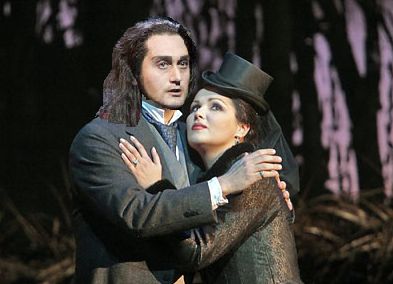
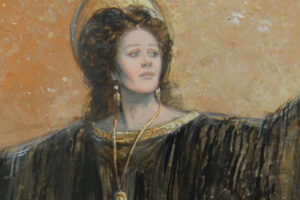
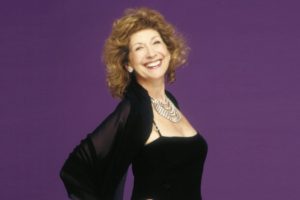
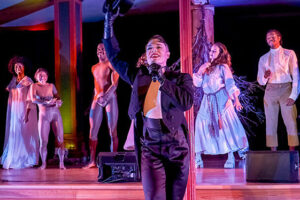
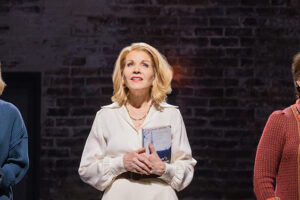





Comments